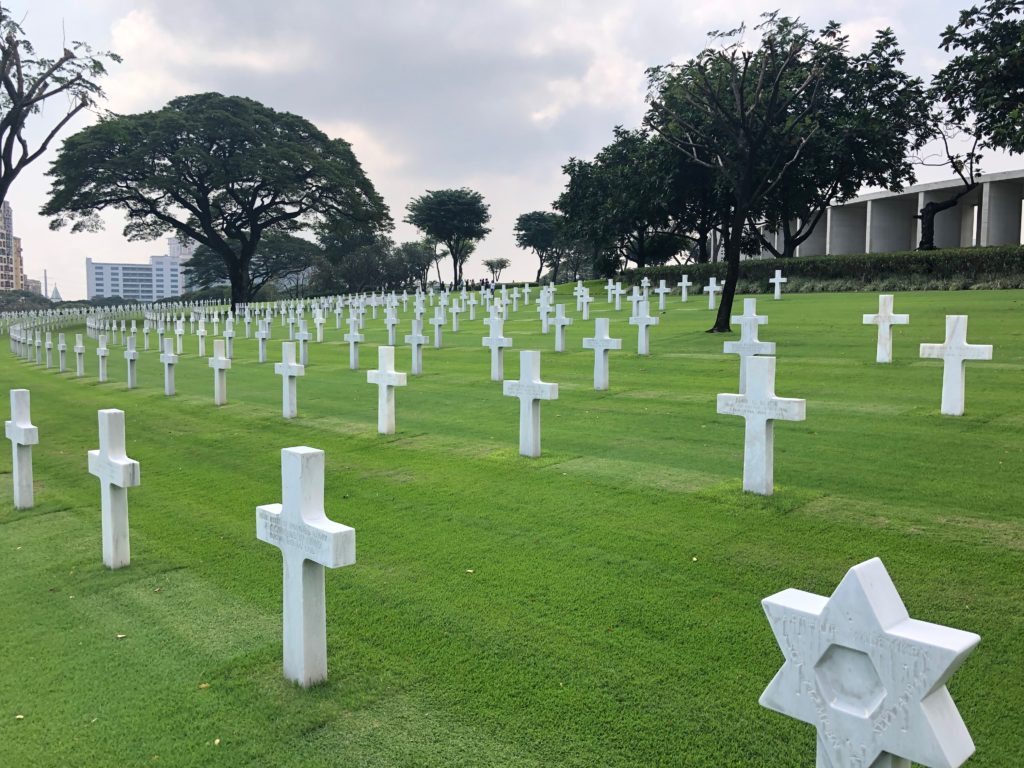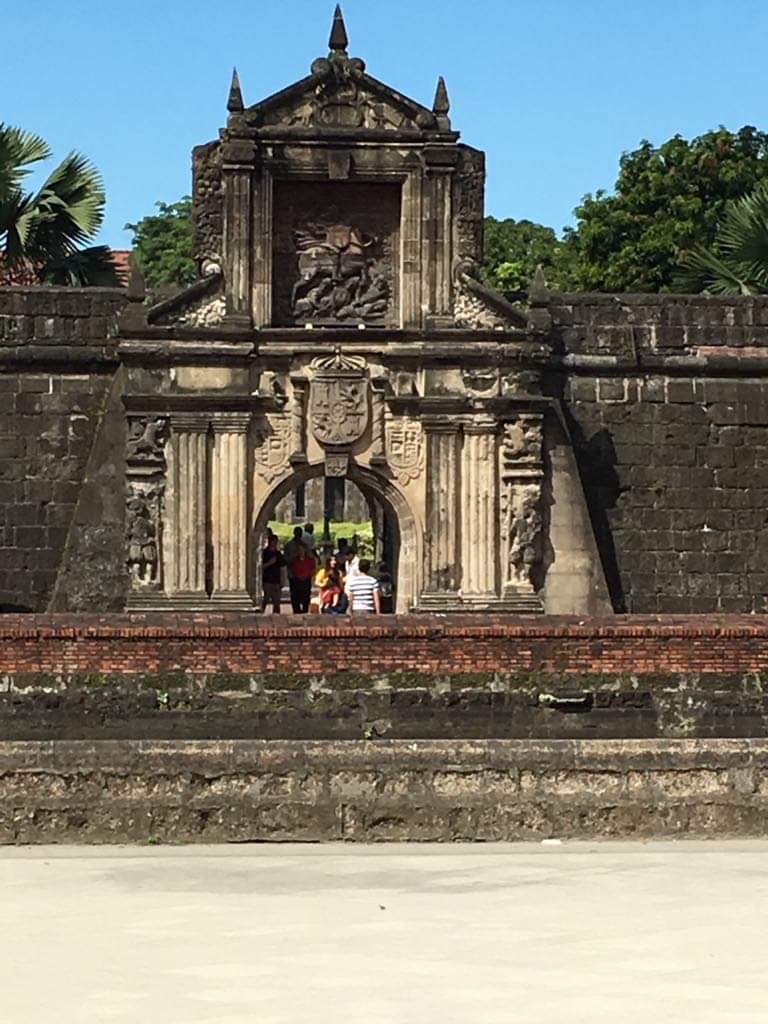My friend Sandi from Canada was visiting for eight days and because we had much to see and do the Tribune is issuing this special edition.
It may have been a quiet weekend in Tagaytay but we didn’t stay around to find out – we went into Manila instead.
I wanted Sandi to experience as much of The Philippines as we could reasonably manage in the eight days available. That had to include Manila. And what better excuse than her visit to check off items on my own ‘bucket list’, much as I loathe that expression. I had done a quick tour of Manila the first time I was here last year, but what did I really see?
It was our experienced driver Romel who suggested going into Manila on the weekend because all the traffic would be going the other way! The Tagaytay City Sports Complex is one of the locations of the SEA Games being held all week all around Manila, hosting the road racing and skate boarding events, and I wasn’t much interested in that. (I might have gone to see the track and field events, but they were being held at the old Clark Air Force Base in Angelese City, way too far.) The usual Tagaytay weekend traffic congestion would have been chaos on the weekend. Whereas in Manila, not so much.
So bright and early Saturday morning our driver met us at the lobby of Wind Residences and off against the traffic we went, leaving Tagaytay to the Manilans.
Manila is a very big metropolis, very, big. Manila City is actually just one of 16 cities bundled into one big metro (one of Ferdinand Marcos’ initiatives). Manyla was a commercial and governmental centre long before the Spanish arrived but became the centre of the Spanish regime in 1571 when Miguel Lopez de Legazpi vanquished the local ruler Rajah Sulaiman II. There’s a statue of Legazpi but none of Sulaiman. The Spanish occupation had as much or more to do with the Catholic Orders (Augustinians, Franciscans, Jesuits and Dominicans) as it did to the military and civilian government; the friars established villages all around Manila, eventually becoming the 16 cities of Metro today, more or less. Regardless, Manila became the principal administrative centre and still is, even though the surrounding centres are larger and more commercial. There are about 16 million souls in Manila, maybe; I’m not sure how many of them are lost. What is striking about this mega-city are the contrasts: modern office skyscrapers and towering condominia interspersing desperate ghettos of squalor; wealth and poverty; construction everywhere, and half-finished abandoned projects everywhere else; and jeepneys and tricycles coming every which way, and the occasional Mercedes and Lexuses.
Into this massive centre ventured two tourists (Sandi and me), and two natives (Carmen and our driver). What could we see in two days and feel satisfied, but not overwhelmed? It fell to me to decide, which suited this planner well enough. I decided we should book hotel rooms in the city centre (Intramuros – inside the walls of old Manila) and make that the centre of our visit. I asked our driver to drive through various parts of the city to give some perspective but the main destination on Saturday was to be the American Cemetery; Fort Santiago in Intramuros on Sunday. And pick up a few other sites as we came to them.
American Cemetery
It’s hard to describe the feeling you get, and the eduction certainly, from this large, tranquil park that is the burial ground and memorial for 53,486 dead or lost American and Pilipino military men and women memorialized in this amazing American memorial. The large park is located on a knoll, with vistas in all directions; 17,201 white marble crosses (and the occasional Star of David) marking the graves of the recovered are laid out in concentric circles down the gentle slopes with manicured lawns and huge trees. But the monument to the lost – two semi-circles with enclosed walls and 36,000 names engraved is even more impressive And the illustrative maps engraved into walls and the information centre informing the uninformed of the intensity of the WWII conflict in The Philippines, leave a lasting impression. It is stupefying to this mind what a Herculean effort the Americans and its allies made to turn around this conflict in the Pacific in just four short years! We Canadians are much more aware of the conflict in Europe, The Great War and World War II, than we are of the Pacific War, but it is to our detriment. This great conflict is yet another reminder of why men and women of the 1940s are often called The Greatest Generation.


Intramuros
Sunday morning brought another wonderful experience, for two reasons, a horse-drawn carriage ride through Intramuros featuring a four-foot eleven-inch revolutionary driver/guide,

and Fort Santiago itself.

This is the first fort I have ever visited that has seen so much active conflict over its 400 year life, (so many were built as a deterrent or contingency but never actually used for its intended purpose); Fort Santiago was, many times. Built by the Spanish in 1571 but burned down by Chinese pirates soon thereafter, then built in stone by the turn of the 17th century; occupied by the British briefly during the Seven Years War (perhaps the First World War), and presumptively controlled by the French during the Napoleonic Wars (the second World War); the site of many skirmishes during the Filipino uprisings against Spain in the 19th century, and torture and trials and executions, in particular the elimination of the cerebral agitator and subsequent martyr and national hero, José Rizal; the center of the American administration following the Spanish-American War in 1898, and for the next 20 years the symbolic target of Filipino revolutionaries against the American occupiers; the Headquarters of the Japanese occupation, bombed beyond recognition when liberated by the combined forces of the American and Philippines armies, and rebuilt by MacArthur following the war in the 1950s; now largely a museum and shrine to José Rizal, and the thousands of prisoners executed there by the Japanese. It is enough to boggle the mind.
Afterword: as we were leaving the fort a trio of young tourists from England were just entering, I was about to say to them what an amazing historical monument it was, but then suddenly realized, in England there are hundreds of much older edifices!
